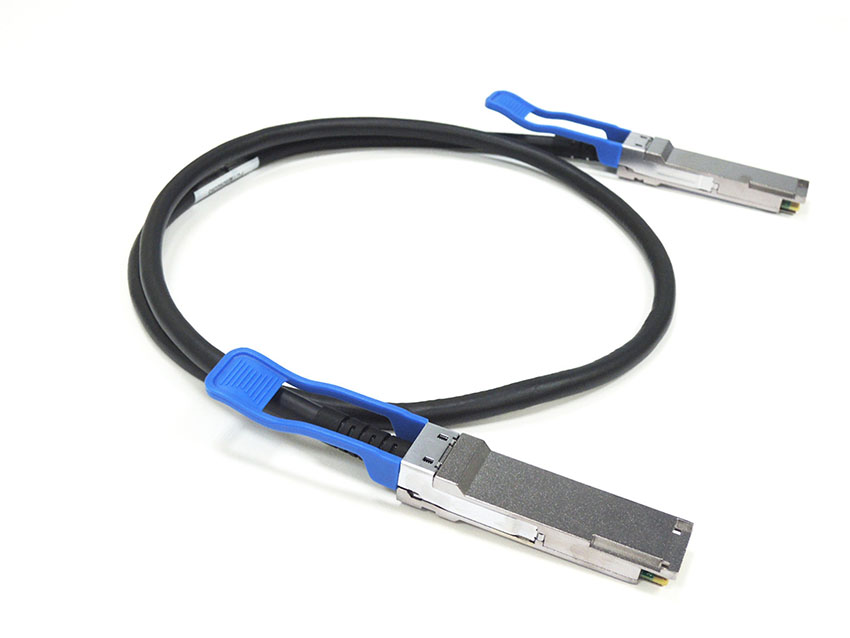

 Knowledge Base +
Knowledge Base +  2024.10.22
2024.10.22Built around the Coherent Steelerton DSP, the 100G ZR QSFP28-DCO transceiver is fully compliant to the IEEE 802.3™-2022 100GBASE-ZR standard, ensuring interoperability with other solutions. The Steelerton DSP is the first purpose-built DSP for 100G ZR applications, optimized for the lowest power dissipation and smallest size.
In the QSFP28 module the DSP is paired with a highly efficient silicon photonics optical front-end and a power-optimized tunable laser, resulting in a typical module power dissipation of less than 5W. To facilitate deployment in a wide variety of edge network locations, including street cabinets or pole mount enclosures, the 100G ZR QSFP28-DCO module is also offered in a version that supports industrial temperature ranges

Transmission reach:
Up to 80km unamplified (loss limited)
Up to 120km amplified (dispersion limited, optionally extendable to 300km)
Full C-band tunable, 50GHz or 100GHz grid with option FlexTune™ automatic wavelength tuning
Case temperature range 0°C to 70°C (C-temp) or -40°C to 85°C (I-temp)
Typical module power dissipation < 5W
Remote digital diagnostics monitoring
| Parameter | FTLC3351R3PL1 |
|---|---|
| Description | 100G ZR QSFP28 Digital Coherent Optics transceiver, standard Tx output power (-8dBm), 100GE, C-temp, 0°C to 70°C, SFF-8636 |
| Operating Distance | 300 km |
| Data Transfer Rate | 100G |
| Form Factor | QSFP28 |
| Wavelength (by band type) | C-Band 5THz DWDM Tunable |
| Transmitter Optical Output Power (dBm) | -8dBm |
| Receiver | coherent |
| Management Interface | SFF-8636 |
| Low End Case Temperature (ºC) | 0 °C |
| High End Case Temperature (ºC) | 70°C |
| Transmitter | Tunable DP-16QAM/8QAM/QPSK |
| Connector | LC |
| Media Type | Duplex SMF |
| Data Rate | 100 Gb/s |
| Diagnostics | digital |
Is QSFP+ compatible with SFP+? How to convert a QSFP+ port to an SFP+ port?
Since the different physical dimensions, QSFP+ is not compatible with SFP+. Does this mean that the QSFP+ port can’t connect with the SFP+ port? No, there are many solutions for converting a QSFP+ port to SFP+.
Solution 1: Using QSFP to SFP+ breakout cable
QSFP to 4 SFP+ copper direct attach breakout cable (DAC) and QSFP to four SFP+ active optical breakout cables can be used to connect to a 40G QSFP switch port on one end and to four 10G SFP+ ports on the other end. These two types of DAC and AOC breakout cables are both pre-terminated with a QSFP+ transceiver on one end and four SFP+ transceivers on the other end. Their main difference is that DAC uses copper cables while the AOC uses fiber cables. These breakout cables are perfect for those who need to connect short distances and they offer an extremely cost-effective and convenient way of doing so.
Solution 2: Using optical transceivers + MTP to LC breakout cable
This solution needs one QSFP optical transceiver and four SFP+ transceivers, then uses an MTP to LC 8 fiber breakout cable to connect them. The fiber breakout cables include MMF and SMF types, which to choose is determined by the two ends of optical transceivers. This solution can provide a much longer distance than the prior, but also costs more.
Solution 3: Using QSFP to SFP+ adapter
QSFP to SFP+ adapter converter is also a cost-effective way to convert QSFP+ to SFP+ port. It allows 10 Gigabit Ethernet connectivity on QSFP-only platforms. Plug and play, no configuration required. The QSA adapter interoperates with all major SFP+ optical transceiver modules, SFP+ direct attached copper cable (DAC), and active optical cables (AOC). With this clever adapter, you can flexibly use any SFP+ transceivers or cables to connect with a lower-speed port on the other end of your network.
QSFP28 Backward Compatibility
Is QSFP28 backward compatible with QSFP?
The answer is yes. QSFP28 has the same factor and size as QSFP. Both QSFP28 and QSFP have four lanes. QSFP28 supports 25Gbit/s per lane, while QSFP supports 10Gbit/s per lane. Similar physical form factor and working principle make QSFP28 backward compatible with QSFP.
Does QSFP-DD support backward compatibility? Which form factors does it support?
QSFP-DD is designed based on QSFP pluggable form factor. It has the same pinout as the QSFP connector. Therefore, QSFP-DD quadruples aggregate switch bandwidth while maintaining the port density. Also, QSFP-DD is backward compatible with the current QSFP form factor types, including 40G QSFP+, 100G QSFP28, and 200G QSFP56. This means that equipment designed with QSFP-DD connectors will be backward compatible, allowing them to support existing QSFP and QSFP28 modules and provide great flexibility for end users.
Subscribe to the newsletter
for all the latest updates.
2-5# Building, Tongfuyu Industrial Zone, Aiqun Road, Shiyan Street, Baoan District, Shenzhen. China
